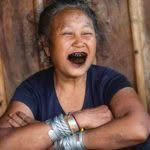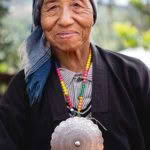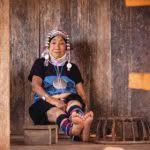Portraits of Myanmar: An inside peek into the daily routines of three locals
Troubled, isolated and breathtaking, Myanmar is opening its doors to the world. A visit to its interior reveals a country in development and an almost haunting beauty.
Words and photos: Chris van Ryn
Despite turmoil in parts of Myanmar, a voyage into its heart is more than rewarding and always feels safe. Meet a woman in central Myanmar who dyes fabric made from lotus stems, a shaman in the highlands near China who practices animism, and a woman from a quintessential Myanmar village by the Andaman Sea, living in a lost world.
PURPLE HANDS
In a house built on the placid waters of Inle Lake, central Myanmar, a woman squats in a corridor near a cauldron. She tucks her skirt between her knees and dips her hands into a swirling pool of purple.
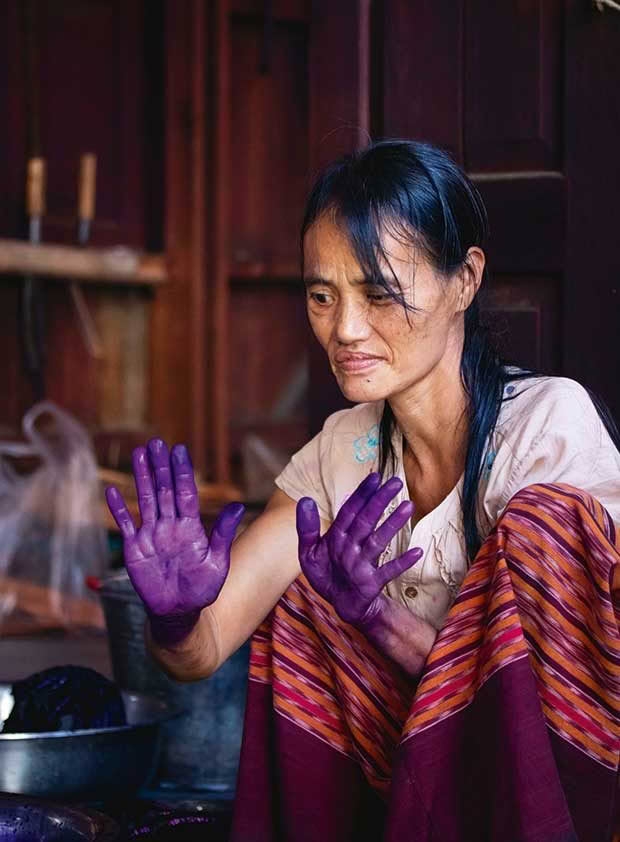
Nearby, another pot sits on glowing embers, the steam drifting lazily into the wood-paneled room and leaking out the window onto houses built on water, propped on rickety posts.
Like old men’s legs, reaching down into the wet, it’s amazing the supports are still upright. Some of them aren’t.
The woman’s brow glistens, and a lick of crow-black hair hangs over one eye, a droopy eye. Her eyes are dark, and she has a mournful mouth. She fishes out a bundle of fabric and begins wringing out purple excess. It runs down her forearms like a bleeding wound, dripping from her elbows.
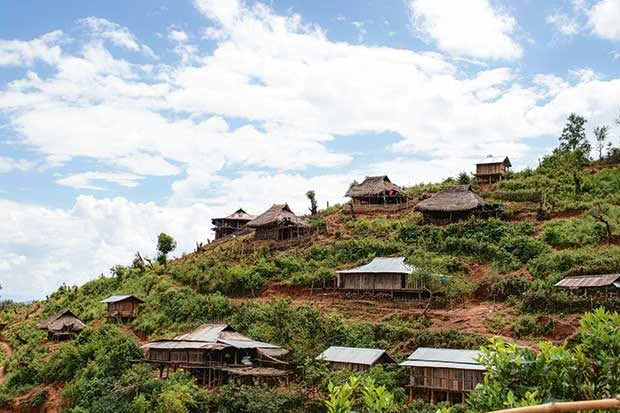
Tribal villages are deep in the jungle, wrapping their way around mountain tops, the height affording both views and protection. Huts are frequently built on stilts, their thatched roofs now gradually being replaced by iron.
In another room, near a spinning wheel, a woman slices lotus-flower stems with a surgeon’s skill, and with practised dexterity draws them apart, exposing a silky web of thread that will be collected, spun, dyed, then woven. A pile of pale-pink flower heads with their spreading fans of petals, this Buddhist symbol of a purified spirit, lies discarded.
Some 7000 severed stems produce enough “silk” for a single scarf, to be elegantly draped around a tourist’s shoulders. And perhaps — so it’s said — the wearer will be left with a meditative calm.
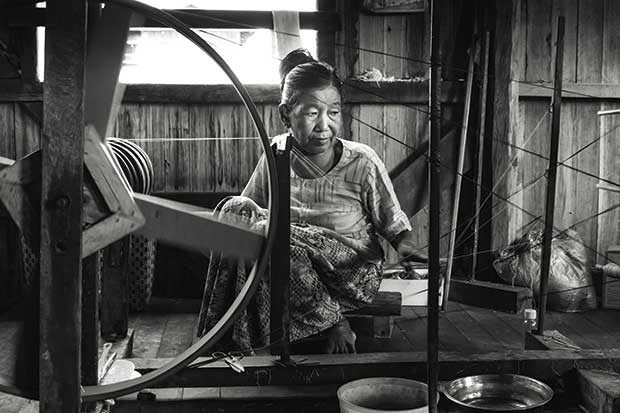
In a house on Inle Lake, a woman spins the threads of a lotus flower together. Thick bands with thousands of threads are then braided and dipped in dye.
Nearby I hear a rhythmic clacking. I enter a room with half a dozen weaving machines. Through a filter of coloured threads, I see faces lined with concentration, eyes darting left to right, hands moving swiftly, feet pumping out a clack-te-clack-te-clack percussion.
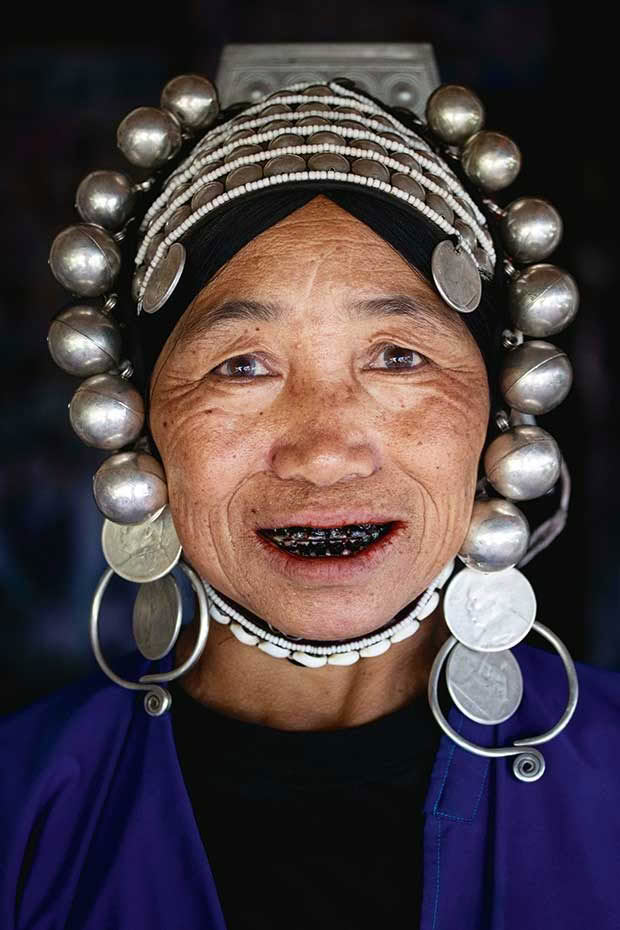
The elaborate headdress of the Akha tribal women denotes their lineage, age and marriage status and is worn with immense pride.
Back in the corridor, the woman with purple hands faces her cauldron, her back to Inle Lake, just a few footsteps away. Fishermen in the distance perform stunning one-legged acrobatics while casting nets from their long wooden canoes.
- Located in Kengtung, Shan State province, these women from the Enn tribe (or sometimes “Ann” or “Eng”) are animists, and unique to Myanmar.
- Bark oil of the chestnut tree is used to stain their teeth black.
- From age 12, they apply the oil to their teeth twice a year.
The sun reflects off the water, placing her in silhouette. She studies her hands then glances at me with doleful, liquid eyes. And in a poignant moment, she lifts her arms, spreads her fingers and thrusts towards me her permanently purple hands.
THE SHAMAN
Aik Yee bites off the end a cheroot and lights up, sending smoke and herbal scent into the dim hut. Soft afternoon light creeps through an open door bringing with it the spirits of the village, mountain and jungle, and throwing a beam onto a small mottled leopard pelt and shrivelled lizard skin pinned to the wall.
A shaman from the Akha tribe, Aik Yee is an animist. He manages the ebb and flow of the spirit world. He lives in a village that has wound itself around a mountain top. Once a year he erects a sacred gate at the village entry, complete with monkey (or other) skull, to demarcate between living spirits and the dead.
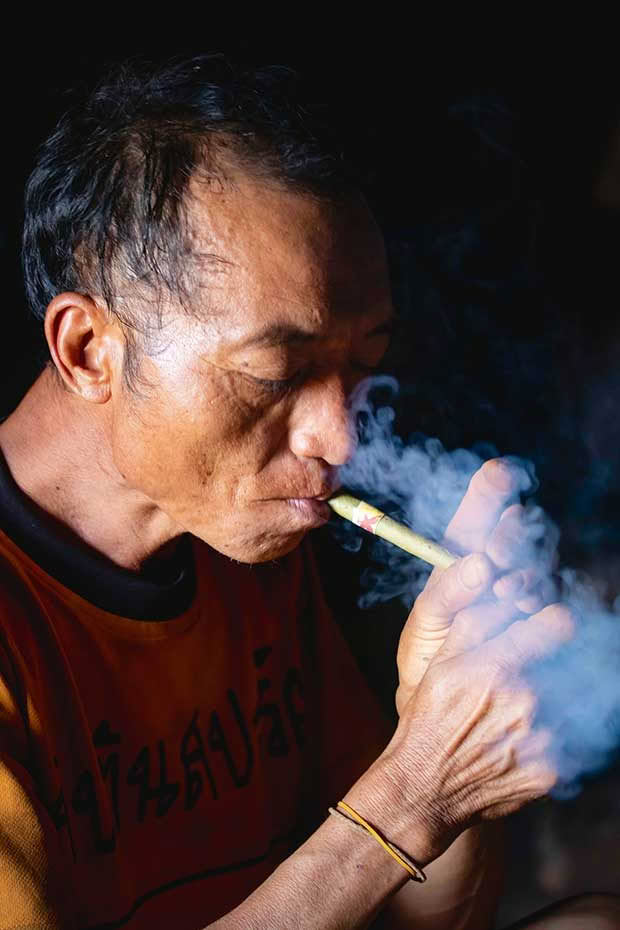
This shaman from the highlands lights a cheroot, Myanmar’s national cigar, filled with tobacco as well as delicious-smelling herbs, the end frequently flavoured with honey. Smoking and offering a cigar to guests is a sign of great hospitality
The hut is rustic and humble. The floor is compacted earth, the vertical planks are a weathered silver, the roof thatched. At one end is the bed covered with a mosquito net, at the other fire casts a smoky scent. Above the fire hang cobs of corn, cheery yellow in an otherwise sepia palate.
Aik Yee reaches into a pot, placing a handful of dried wasps on the table along with some freshly harvested larvae that mature in buffalo excrement. He looks at me expectantly. I shake my head.
The Akha people were nomadic, traveling across borders, over mountains and through jungles. They are still nomads — of a different kind, traveling between animism, Buddhism and Christianity, between hunter-gatherers and agriculturalists and capitalism, never quite settling anywhere.
The shaman smiles continuously. Whether this is from dealing with spirits or home-brewed sake is unclear. Many village men have drifted into alcoholism. Because of limited options, others embrace the cash crop, opium, which grows around the mountain and finds markets in China.
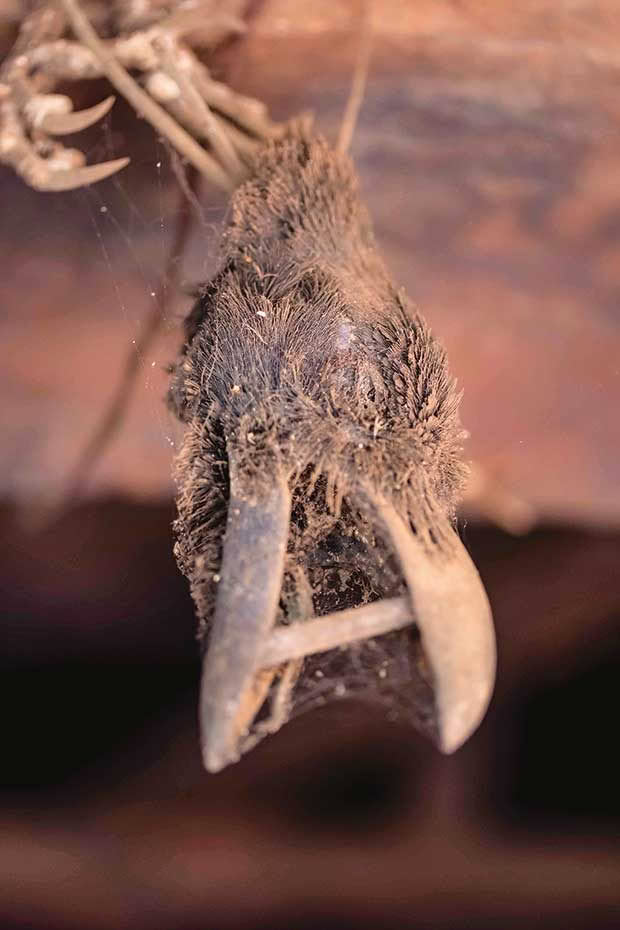
A crow’s head hung outside a hut door and a skull at the village gate entry define the boundaries between the spirits of animals and humans.
Exiting through the doorway, I pass three hanging crows’ heads, their eyes plucked out for medicinal purposes, little bamboo splints prizing their beaks open so their spirits escape. On the deck sits an old Akha woman with a proud gaze. She wears a magnificent headdress, covered in silver balls and coins, signifying her ancestry, as if clinging to a disappearing world.
The village is quiet. I pass an Anglican church with steeple, white weatherboards and red corrugated roof. Coming towards me is a young man with a musket slung over his shoulder and a woman with tar-black teeth in traditional black dress carrying a chicken by its legs. Just before leaving the village, I pass the Baptist church with its blue roof.
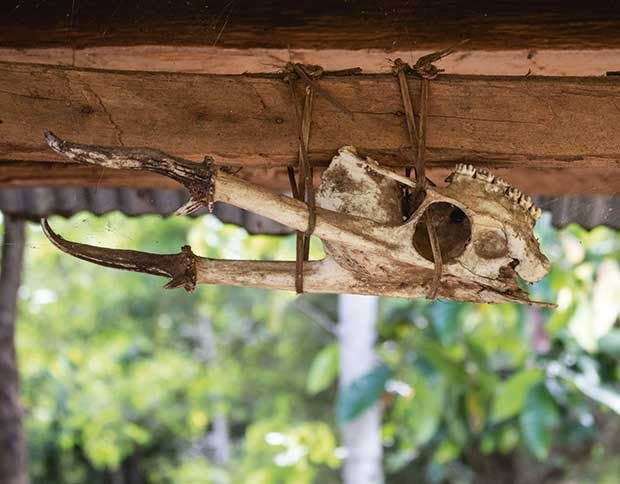
Entering the jungle, I toil up a slope. The heavy air vibrates. A throbbing chorus of crickets pulsates in my ears in unison with the beat of my heart — a sure sign, I am told, that rain is close. As I move on, the sound loses itself in the dense trees.
From out of nowhere, a dragonfly appears, hovers, darts around dementedly then alights on a leaf in the sun, its thorax a splendid gold, its wings finely veined crystal.
Now the air carries the gentle peal of buffalo bells. Breathing heavily, watching the insect’s acrobatics in mid-air, standing in a jungle that churns with life, I’m overwhelmed with a sense of wellbeing, a feeling of connectedness to the dragonfly, the flitting butterflies, the buzzing crickets, the towering trees, the Akha, the thunderous monsoon rains, the expanding universe.
Perhaps it is the spirit of all things enveloping me in a warm embrace?
THE LOST WORLD
Here sits an old woman with a remarkable face. Her skin is jaundiced; her eyes have gone on a long journey and can’t find their way back.
I’ve stopped for coffee somewhere between Dawei and Myeik at a typical street-side café with a wide-open frontage and interior that looks like a kindy classroom with low tables and little red and blue plastic kiddie chairs. Sitting, my knees reach my chest.
The village is vibrant: chickens pecking, dogs sniffing about or slumbering, their abdomens gently undulating, pigs rooting in the dirt, and half-naked, squealing children playing chase. There’s a motorbike on its side. An urn sits on glowing embers, from which a pipe percolates clear dewdrops of rice sake. Teenagers pass laughter and a small rattan ball to each other using only their feet.
I raise my eyebrows — and my camera: “Photo?” The old woman looks past me, silent. She doesn’t understand, I think. Nearby is her son. He smiles and taps his temple, then twirls his finger in the air. I look at his mother — and Alzheimer’s looks back.
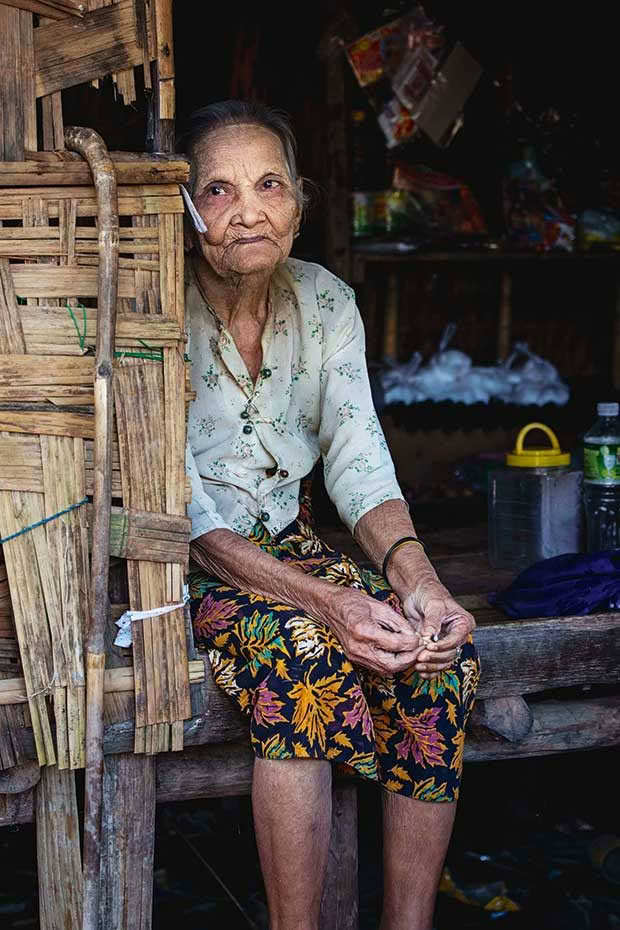
In a coastal town between Myeik and Dawei, a woman is entertained by life around her. In Myanmar, it is customary for generations to remain in the village.
She’s lived her life in this village, toiled in nearby fields, dried little silver fish on bamboo racks, fetched water from the well, outlived her home-brewed-sake-drinking husband, placed incense and wilting flowers in little Buddha shrines, and now waits, surrounded by children and grandchildren and village life, familiar, yet fading.
Dementia has randomly snipped frames from the film roll of her life. A cigarette is adhered to her lips as if it is a lifeline to another world. A lost world. She is wilting like the flowers in the Buddha shrine.
I touch her bony shoulder, but she’s already facing the other way and doesn’t turn back.
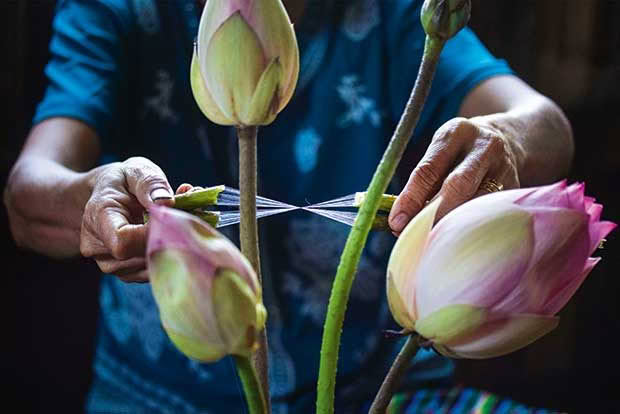
The lotus flower, a Buddhist symbol of purity and enlightenment, is harvested for its silk-like threads and woven into fabric.
If the shadow of Alzheimer’s darkens my door, where would I rather be: in a coastal village with the scent of wet earth and glowing embers and dried fish and a sip of sake, or a rest home with the smell of antiseptic, excellent medical care, absent of family, and nothing but lingering loneliness?
I am about to leave, when a nearby toddler wobbles, then plumps down — plop — on his bottom, wide-eyed, tiny hands splayed. Then I see the old lady’s face. Her eyes flicker. Her lips unfold like lotus petals. She smiles.
Coastal village, I think.
NOTEBOOK
Myanmar is a developing country, beautiful and intriguing. Tourism is vital to its economy.
Getting there
Many flights go to Kuala Lumpur, Malaysia. From there it’s a two-hour flight to Yangon, Myanmar, with Myanmar Airways.
• Domestic flights with Myanmar Airways are excellent and easy to arrange through a travel agent.
• Approval is required to hike into the mountains to visit the Akha and Ann tribes. It’s strictly controlled. It can be attempted solo, but I suggest employing a guide (as I did), which can be organized through travel website Active Asia, activeasia.co.nz. Active Asia can also arrange a complete Myanmar itinerary, which I recommend.
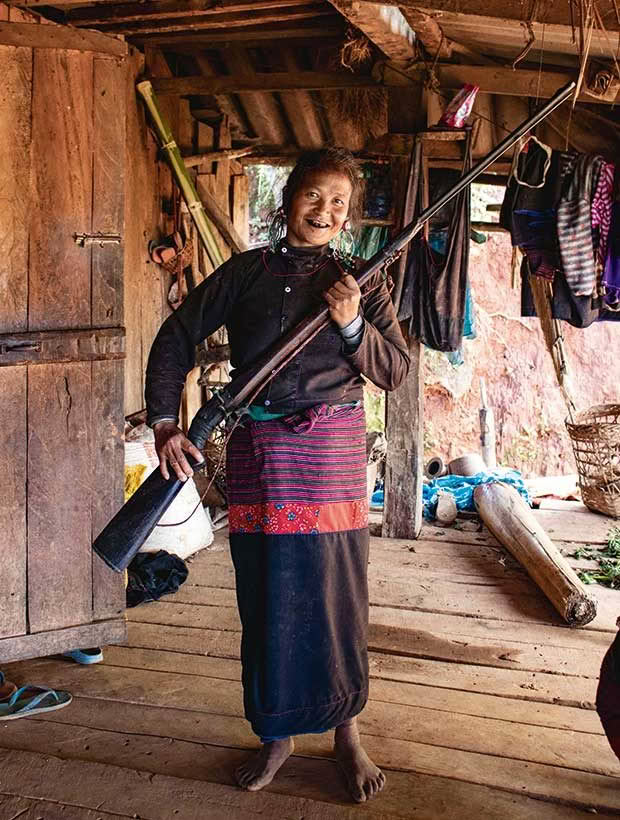
A woman of the Eng tribe displays a single-shot, matchlock musket made in the highland villages. Muskets arrived in the country in the 1530s and are still used today by villagers for hunting.
Food
Myanmar is a developing country but don’t fear the quality of food — there are some splendid eateries. Try these: In Yangon: The Rangoon Tea House and Seeds Restaurant, equal to any of the best European restaurants.
• In Myeik: There’s an exceptional seafood restaurant called Shwe Yar Su (The Golden Century) Beer & Seafood Restaurant. The food is a mix of cultures — Arabic, Indian and Portuguese. Suck mangrove snails slowly cooked in a coconut, sip ginger garlic broth and dip delicious octopus skewers in traditional sauces. Try South American ceviche or southern Myanmar jungle leaves; eat soft shell crabs in Indian masala sauce.
• Don’t overlook street-side cafés. Most are safe to eat in, and the cuisine can be exceptional. Although the idea might seem abhorrent, eat insects (the UN recommends insects as a sustainable alternative to meat), e.g, roasted crickets and something called “disco frogs”, which are small fried frogs whose legs are splayed. There are wasp larvae and, for the very adventurous, maggots found in buffalo poo. Fried, they’re delicious, more like a crisp than a worm.
• Try the home-brewed rice sake. It has a smoky flavour like a Laphroaig. But be warned: it’s incredibly strong. Like, really. Two-stroke strong. Burning.
• Sample the three-in-one coffee or tea, which comes in sachets and is ridiculously sweet — but delicious. Experience this in a local tea house, and chat with the locals.
Is it safe?
The Rohingya refugee crisis, and the actions of the military, have cast a shadow over Myanmar. Nearly 90 per cent of the people are quite uninformed about the plight of the Rohingya.
Local media, under some military control, is full of propaganda, with a lone voice of resistance here and there. But Myanmar feels like the safest place in the world.
There’s no threat, and the people are good natured. There are, however, restricted areas controlled by the military that neither public nor locals can travel to.
Vaccinations
Get up to date with vaccinations. Many say not to bother with malaria tablets. I say take them. Better safe than sorry, and hiking through a swarm of mosquitoes in the jungles is a lot easier knowing you’re protected.
Love this story? Subscribe now!
 This article first appeared in NZ Life & Leisure Magazine.
This article first appeared in NZ Life & Leisure Magazine.
